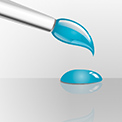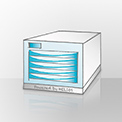HELIOS Tech Info #182
PCShare and SMBv1 on Windows 10
Beginning with Windows 10 Fall Creators Update and Windows Server, version 1709, Microsoft automatically disables the SMBv1 client if it is not used regularly. PCShare, however, requires SMBv1 to work properly.
When you try to connect to PCShare without using SMBv1 you may receive one of the following error messages:
> The specified server cannot perform the requested operation.
> The specified network name is no longer available.
> You can't connect to the file share because it's not secure.
When/Why is SMBv1 disabled?
After a clean installation of or upgrade to Windows 10 version 1709 the SMBv1 client is available by default for the moment. Windows then starts to monitor the usage of the SMBv1 protocol.
If SMBv1 is used within the first active 360 hours after installing/upgrading, the SMBv1 client is enabled permanently with no further attempts to disable it. If SMBv1 is not used, the client gets disabled.
How are PCShare users affected?
If the machine is set up and used in a network with active HELIOS services, SMBv1 will most likely be used within those first active 360 hours, and no action is required. Windows will enable the SMBv1 client permanently if SMBv1 usage is detected.
If, however, the machine was set up and used outside of the network with HELIOS services for more than 360 hours or hasn't connected to a PCShare server yet, the SMBv1 client might have been disabled and the machine can not be used anymore to connect to PCShare. You will have to re-enable SMBv1 to be able to connect to a PCShare server.
Enable SMBv1, Method 1: PowerShell
Open an adminitrative Windows PowerShell (right click, “Run as administrator”). To check the current status of SMBv1, run the command:
# Get-WindowsOptionalFeature –Online –FeatureName SMB1Protocol
To enable SMBv1, run the following command:
# Enable-WindowsOptionalFeature -Online -FeatureName SMB1Protocol
Enable SMBv1, Method 2: Programs and Features GUI
Select “Apps” from the Control Panel and open the “Programs and Features” link in the “Related settings” section.
On the left panel of the “Programs and Features” dialog, select “Turn Windows features on or off”. Activate the “SMB 1.0/CIFS File Sharing Support” check box, and confirm with “OK”. A reboot may be required.
Will PCShare support SMBv2/3?
PCShare still uses SMBv1 to provide the broadest compatibility to all supported clients. However, since Microsoft starts to abandon SMBv1 actively now, it is clear that a SMBv2/3 support for PCShare is very important for our clients. HELIOS is working on the SMBv2/3 implementation with high priority.
We will update this TechInfo upon changes.
Additional information
Status of SMBv1, Microsoft: https://support.microsoft.com/en-us/help/4034314/smbv1-is-not-installed-by-default-in-windows
How to enable SMBv1 in different Windows versions, Microsoft:
https://support.microsoft.com/en-us/help/2696547/how-to-detect-enable-and-disable-smbv1-smbv2-and-smbv3-in-windows-and

 Enterprise Server
Enterprise Server
 Developers / SDK
Developers / SDK
 Retail / Industrial
Retail / Industrial
 Newspapers / Publishers
Newspapers / Publishers
 Photographer / Studios
Photographer / Studios
 Ad Agencies / Premedia / Printers
Ad Agencies / Premedia / Printers
 Video & Entertainment
Video & Entertainment
 Cloud Collaboration
Cloud Collaboration
 HD Color
HD Color
 Image Processing
Image Processing
 Proofing
Proofing
 WebShare Connectivity
WebShare Connectivity
 Workflow Automation
Workflow Automation
 File Server
File Server
 Press Releases
Press Releases  Videos
Videos  Newsletters
Newsletters  Events
Events